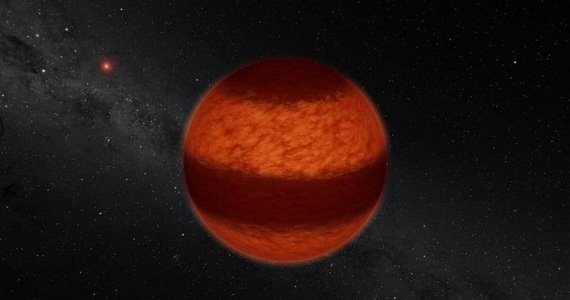In the atmosphere of exoplanet TYC 8998-760-1 b, a type of carbon known as carbon-13 has been detected. This result indicates that the exoplanet formed far from its host star, in cold regions of its system, outside the so-called snow line .
“It’s really unique that we can measure isotopes in the atmosphere of an exoplanet over vast distances,” said Yaping Zhang, an astronomer at Leiden University.
TYC 8998-760-1 b was discovered in 2019. It belongs to an extremely rare group of exoplanets – the ones we’ve been able to visualize firsthand. TYC 8998-760-1 b orbits its star at a relatively large distance – about 160 AU (I). For comparison – Pluto revolves around the Sun at a distance of 40 AU
The exoplanet is also very large – about 14 times greater in mass and two times larger in diameter than Jupiter, which means that it is relatively easy to observe. Zhang’s team of scientists took a closer look at it to see if the light reflected from the star could tell them something.
The researchers used an instrument called the Spectrograph for Integrated Field Infrared Observation (SINFONI) on the European Southern Observatory’s Very Large Telescope in Chile. This instrument monitors the spectrum of light – the team’s search for absorption features. These are dark lines in the spectrum that form when certain elements absorb certain wavelengths of light. The researchers found that the wavelength absorbed by TYC 8998-760-1 b corresponds to carbon 13, an isotope of carbon.
Isotopes are variants of the same element that have the same number of protons and electrons, but a different number of neutrons. Carbon 12, the most stable form of carbon, contains six. Carbon 13 has six protons and six electrons, but seven neutrons. This is important because their formation pathways are different and behave differently depending on environmental conditions.
At TYC 8998-760-1 b, scientists predicted an abundance of carbon. The amount of carbon-13 they found in the atmosphere of an exoplanet was twice as high as expected. The team thinks it might tell us something about the conditions under which TYC 8998-760-1 b was formed.
The planet is more than one hundred and fifty times farther from its host star than the Earth is from the Sun. At this distance, the ice may have formed with more carbon-13, causing a greater portion of this isotope to be present in the planet’s atmosphere today, astrophysicist Paul Mollière of the Max Planck Institute for Astronomy in Germany explained.
This area will be outside the carbon monoxide snow line – the distance from the star beyond which carbon monoxide condenses and freezes from gas to ice (different gases have different snow lines).
The discovery of isotopes in the atmosphere will not yet be possible for many exoplanets, but as our telescopes improve, it could provide a new way to study the formation of exoplanets.

“Devoted organizer. Incurable thinker. Explorer. Tv junkie. Travel buff. Troublemaker.”







